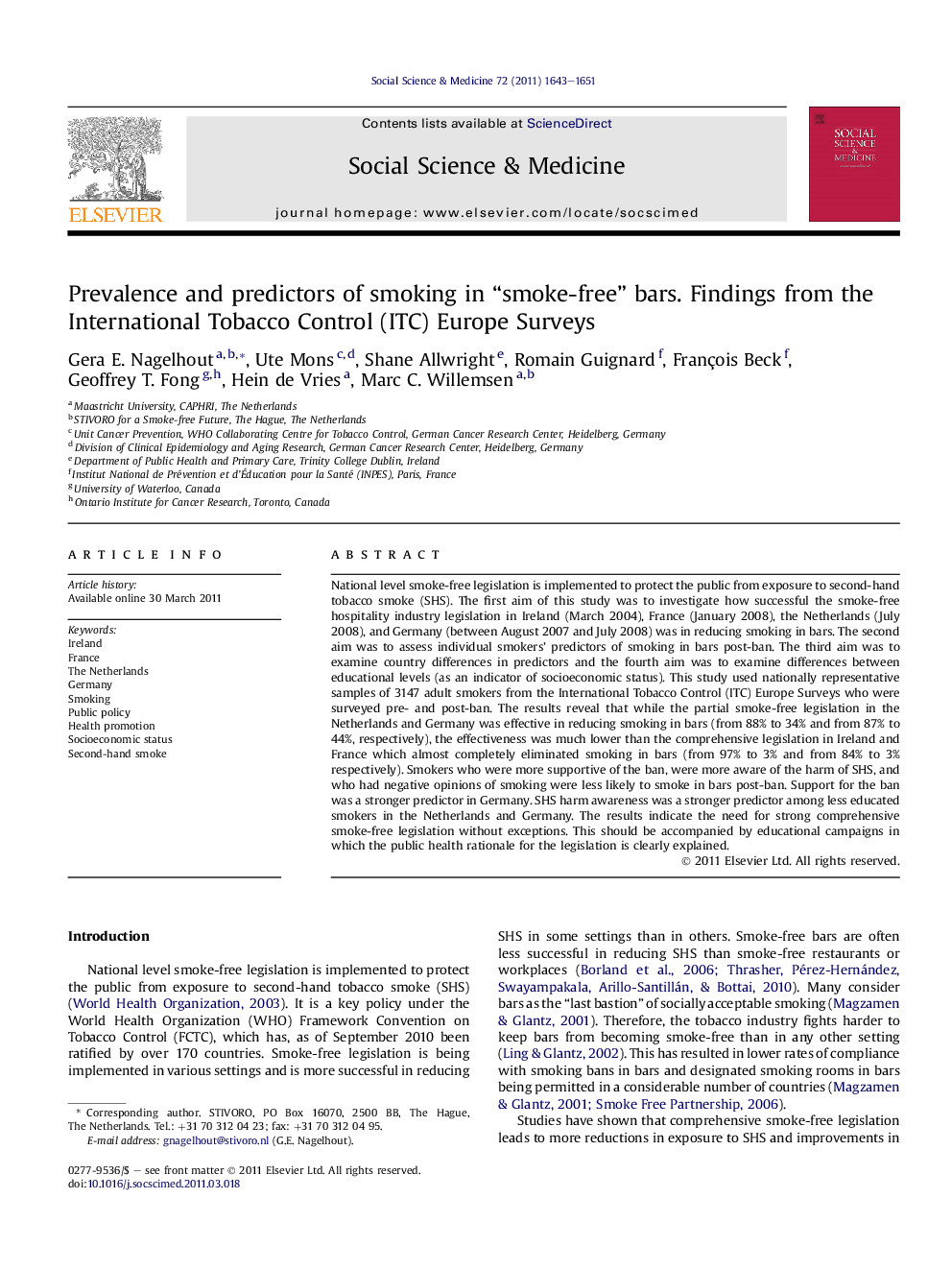| کد مقاله | کد نشریه | سال انتشار | مقاله انگلیسی | نسخه تمام متن |
|---|---|---|---|---|
| 952940 | 927555 | 2011 | 9 صفحه PDF | دانلود رایگان |

National level smoke-free legislation is implemented to protect the public from exposure to second-hand tobacco smoke (SHS). The first aim of this study was to investigate how successful the smoke-free hospitality industry legislation in Ireland (March 2004), France (January 2008), the Netherlands (July 2008), and Germany (between August 2007 and July 2008) was in reducing smoking in bars. The second aim was to assess individual smokers’ predictors of smoking in bars post-ban. The third aim was to examine country differences in predictors and the fourth aim was to examine differences between educational levels (as an indicator of socioeconomic status). This study used nationally representative samples of 3147 adult smokers from the International Tobacco Control (ITC) Europe Surveys who were surveyed pre- and post-ban. The results reveal that while the partial smoke-free legislation in the Netherlands and Germany was effective in reducing smoking in bars (from 88% to 34% and from 87% to 44%, respectively), the effectiveness was much lower than the comprehensive legislation in Ireland and France which almost completely eliminated smoking in bars (from 97% to 3% and from 84% to 3% respectively). Smokers who were more supportive of the ban, were more aware of the harm of SHS, and who had negative opinions of smoking were less likely to smoke in bars post-ban. Support for the ban was a stronger predictor in Germany. SHS harm awareness was a stronger predictor among less educated smokers in the Netherlands and Germany. The results indicate the need for strong comprehensive smoke-free legislation without exceptions. This should be accompanied by educational campaigns in which the public health rationale for the legislation is clearly explained.
► Partial bans were effective in reducing smoking in bars, but comprehensive bans almost completely eliminated smoking.
► Smokers who supported the ban were less likely to smoke in bars post-ban.
► Smokers who were more aware of the harm of second-hand smoke were also less likely to smoke in bars post-ban.
► Awareness of the harm of second-hand smoke was a stronger predictor of not smoking in bars post-ban among low SES smokers.
Journal: Social Science & Medicine - Volume 72, Issue 10, May 2011, Pages 1643–1651